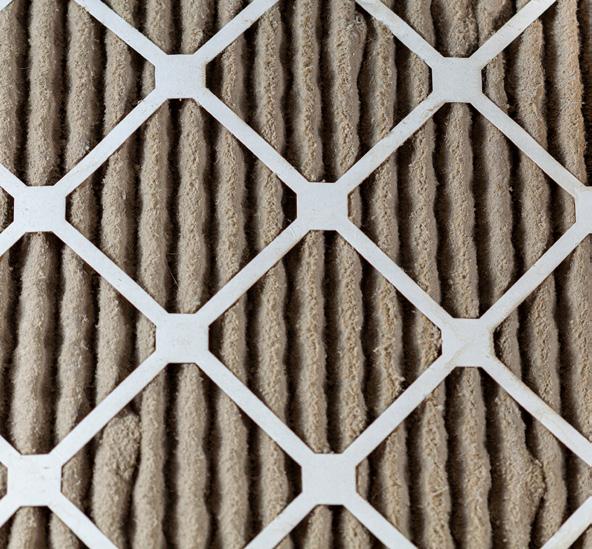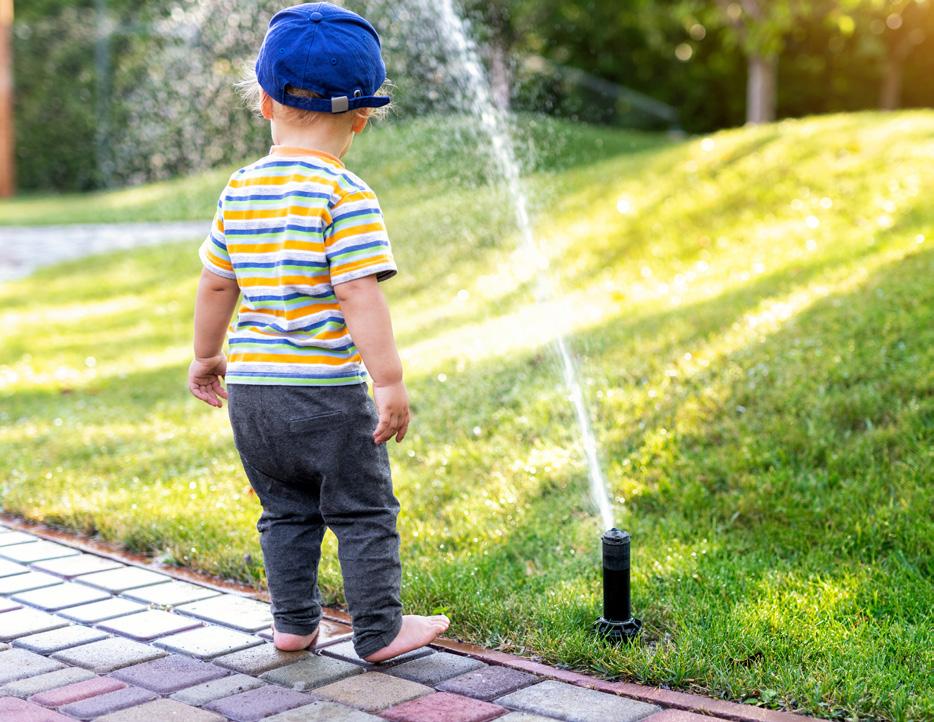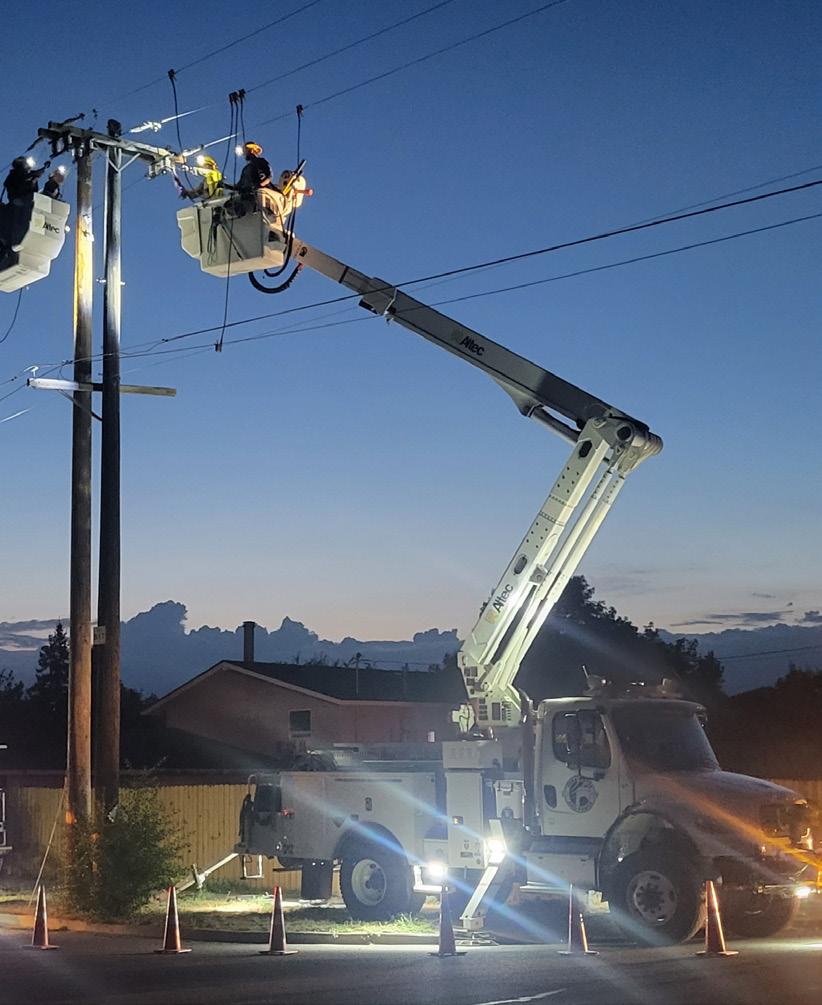SPRING INTO ACTION:
Give your sprinkler system some TLC
Spring has sprung, and you know what that means — it's time to show your sprinkler system some love! Because a little TLC now can save you a whole lot of trouble (and money) down the road.
• Begin by inspecting your sprinkler heads and pipes for signs of damage. Winter can be harsh on outdoor systems, and frost or physical damage may have occurred. Look for cracked, broken, or misaligned sprinkler heads. Also, check for any exposed pipes that might have been damaged by freezing temperatures or accidental impacts.
• Replace any broken components. Updated sprinkler heads are often more efficient than older models, so this could be a chance to upgrade your system. When replacing parts, make sure they are compatible with your existing setup.
• Adjust sprinkler heads to ensure proper coverage and prevent overspray. Misaligned sprinklers can waste water by spraying sidewalks, driveways, or streets instead of your lawn and plants. Take the time to fine-tune each sprinkler head, ensuring it's targeting the intended area.
ENERGY SAVER
Check that your HVAC filters are clean
Spring is the perfect time to clean or replace your HVAC filters, which boosts system efficiency and improves indoor air quality. Clean filters ensure smoother airflow and lower energy usage, keeping your space comfortable and your power bills in check. Regular filter maintenance not only extends the lifespan of your HVAC system but also fosters a healthier home environment as the seasons change.
Give your sprinkler system some TLC
• Take a test run of your system to check for leaks or malfunctions. Turn on each zone of your sprinkler system and observe its operation. Look for any unusual spraying patterns, weak water pressure, or areas where water might be pooling. These could mean there are underground leaks or other issues that need addressing.
How backflow prevention devices keep your drinking water safe
The water flowing from your tap is essential for drinking, handwashing, and flushing the toilet. But imagine if we could safeguard this water even before it enters your plumbing system.
Enter the world of backflow prevention devices.
Don’t forget to have your backflow prevention device inspected annually. For more information and a list of Backflow Assembly Testers, visit our website, verawaterandpower.com. CONTINUED FROM FRONT
• If you find any problems during your inspection or test run, address them promptly. If left unattended, small issues can quickly escalate into larger, more expensive problems. Don't hesitate to call a professional if you're unsure how to fix a particular issue.
• Consider scheduling quarterly check-ups to keep your system in optimal condition. Regular maintenance can catch potential problems early and ensure your sprinkler system operates efficiently throughout the growing season.
• While troubleshooting pressure issues, if you have good water pressure in your house but not your sprinkler system, the issue is in your sprinkler system.
These systems, equipped with valves and other mechanisms, are designed to be added to a public water supply line, offering an extra layer of protection. By using mechanisms such as check valves, air chambers, and vacuum breakers, they manage pressure within your pipes, making sure no harmful substances find their way back into the public's clean water.
When you turn on your sprinkler or faucet, this system works by preventing water from going backward through a valve or device like a hose bibb (the part of your house that connects to your hose). This prevents unwanted contaminants from getting into the public water supply.
While you're thinking about your outdoor water systems, please provide your input for future upgrades by filling out the water service line survey on the next page.
Participate in our water service line survey
We're conducting a water service line survey and request your participation. This survey is part of our ongoing efforts to maintain and improve our water infrastructure. Your input will provide information that helps us plan for future upgrades and ensure we continue to deliver clean, safe water to every household in our community.
Visit verawaterandpower.com/water-service-line-survey-2025 or scan the QR code below with your smartphone to participate in the survey. The questionnaire is brief and should only take a few minutes to complete.
The survey includes questions about the age of your home and the material of your water service line. We also have included a step-by-step guide showing you where to find your service and how to easily identify the material.
We appreciate your time and cooperation in completing this survey. Your participation contributes to the continued reliability and quality of our community's water supply.
SCAN WITH SMART PHONE FOR SURVEY
National Lineman Appreciation Day is April 18
National Lineman Appreciation Day is April 18, and it is a time to express our utmost appreciation to the great men and women who work so hard for us every day. It’s our honor to celebrate the hard work, innovation and dedication of electrical lineworkers.
POWERING OUR COMMUNITY, TOGETHER
We’re not your typical utility company – we’re a not-for-profit, community-owned enterprise that provides both water and power to our community.
What sets us apart: Our governance. We’re led by a board of five directors who are our fellow community members, customers just like you who live right here in the district. They understand our local needs because they experience them firsthand.
Our board meets monthly, and these meetings aren’t held behind closed doors. They are open to the public. The agendas and minutes are posted on our website.
As a publicly owned utility, our primary focus is you – our community. We’re not driven by profit margins or shareholder dividends. Instead, our mission is clear: to provide reliable, affordable, safe water and electricity.
Ready to dig into your next project? CALL 811 FIRST!
When planning to upgrade your garden with a new fence, plant a tree, or start any project that involves digging, please take a moment to put safety first.
Here in Washington State, before you bring out the shovels and diggers you need to call 8-1-1.
Underground lies a hidden network of utilities that provide all sorts of services. From electric cables to water pipes, disturbing these without knowing could mean trouble.
Here's How It Works:
Vera’s low prices rooted in our history
For decades, Vera’s price for power was less than a penny. Today, our prices are still some of the lowest in the country. Vera’s residential rate is 6.58¢ per kilowatt hour (kwh) which is significantly lower than the U.S. average residential rate of 16¢ per kwh (data from the U.S. Energy Information Administration).
Our price of electricity per kwh has been the same since 2015. Our water rates are low, too. The median monthly residential water bill is $26. The national average is $47.
Call 811: Simply call 811 at least 2 business days before you plan to start your project. This service is free to use and a good first step to safe digging.
We Mark, You Dig Safely: After you call, we'll come by to mark the location of all known underground power and water lines in the area you plan to dig. This way, you know exactly where it's safe to dig.
3. Understand the Colors: We use a rainbow of colors to mark different utilities: for electric lines for water
ORANGE for telephone/TV-cable YELLOW for natural gas for wastewater
So, remember, before you dig into your next outdoor project, call 811.













